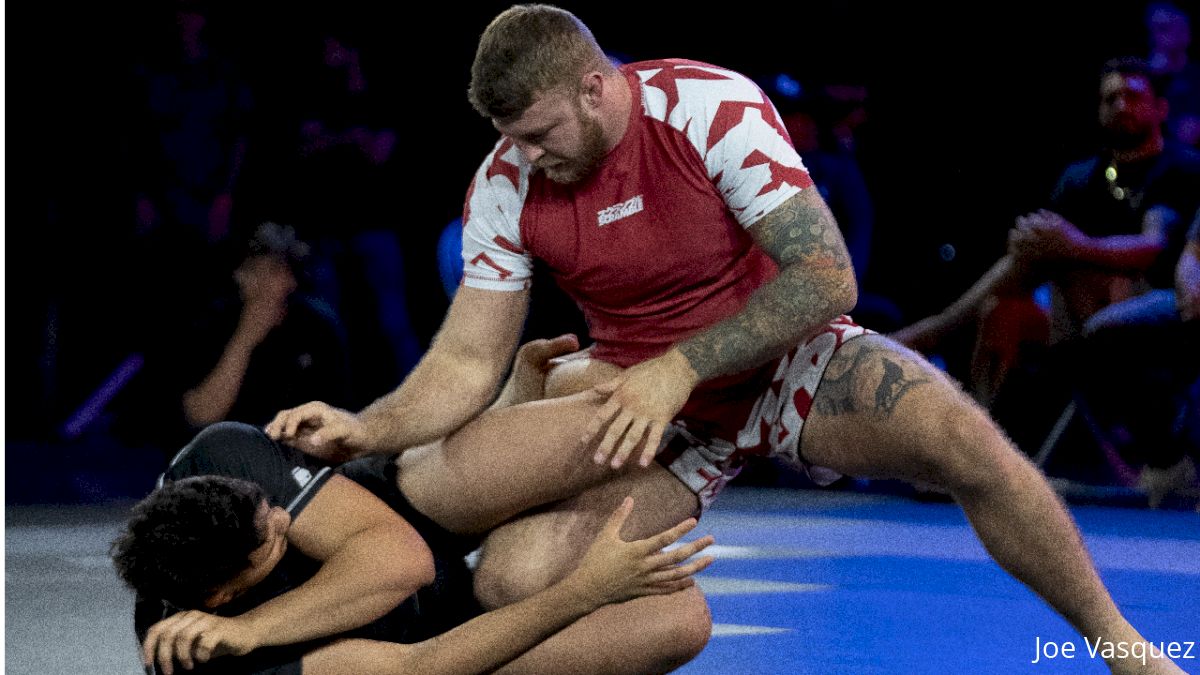What Is Rumble Passing? This New Style Is Catching Fire In No-Gi
What Is Rumble Passing? This New Style Is Catching Fire In No-Gi
What is rumble passing, the new passing style that no-gi grapplers have been developing to shut down leg locks and put the pressure on?

The no-gi game continues to take steps forward and evolve as grapplers build on the strategies and metas that came before. While not every evolution will be as pronounced as the leg locking boom of the 2010's, there are still a lot of changes happening that we can learn from and appreciate. A new method for approaching and defusing the modern no-gi guard has emerged; rumble passing, as pioneered by Dima Murovanni and the squad at B-Team.
What is "rumble" passing? Rumble passing is a series of best practices for approaching a seated guard and turning it into a supine guard with as little risk as possible. In truth, it isn't really "passing" but it sets up your passing by defusing the most dangerous exchange and forcing people flat onto their back without grips. Once they are flat, you can then transition into outside passing, body locking, knee cuts, and any variety of offense that you want.
As the no-gi guard evolved into its own position beyond the gi, it became clear that the two most effective methods of attack were leg locking entries and wrestling up - at least when the best are fighting the best. In the gi guard, the focus is largely on playing from that flat position and pulling people into you with connections on the upper body (mostly using collars, sleeves, and lapels). No-gi, you lack those reliable connections on the upper body which forces the focus onto the lower body. Instead of pulling them to you, you have to go to them.
So now that the guard players want to be seated and don't want to be flat, naturally the top players want the opposite - flat backs on the mat that will limit the guard player's best offensive options. That's where rumble passing comes in. While many gyms have found successful ways to engage the guard, this is a deeper focus on the topic that has shown results worth paying attention to.
The same way that many who play guard are in effect "wrestling" from their butt, now rumble passing aims to bring a lot of foundational wrestling concepts to approaching the guard. This means you lead with your head and hands and keep your legs back - a direct contrast with most gi passing which will aim to keep collars and solid upper body grips limited. Even neutral grips for the top player is fine, just so long as they keep the bottom person from securing what they want.
Once the head and hands are set, the top player starts using one of the top player's biggest advantages - mobility. No matter how fast the bottom player is, the top player can step and change direction faster. Failure to react from a seated position would lead to deep body locks or worse - exposure of the back - so most guard players take the easy option and fall back flat to retain the guard.
The moment they go flat, you can begin to employ almost any passing style that fits. Outside passing with torreandos and high steps, tight passing with body locks and knee cuts, and moving into half guard for pinning passes are just some of what is on the menu once the table has been set with rumble passing. Also of interest, but its own topic, is the 'camping' positions that people have been developing more & more - positions that are mechanically draining for the guard player while keeping the top player safe. Those on top who are able to chain their rumble passing to camping positions are having an enormous amount of passing success right now and it deserves recognition and notice from the grappling world.